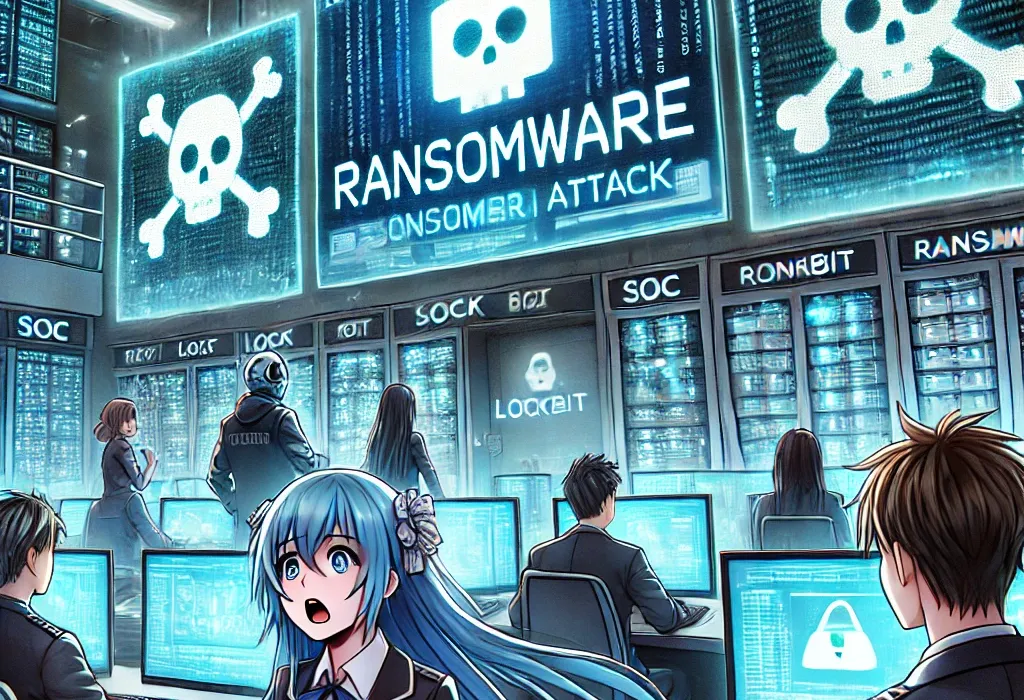Ransomware is one of the biggest threats in cybersecurity today. It has caused serious problems for businesses, governments, and even individuals. From shutting down hospitals to disrupting companies, ransomware can affect everyone. This guide will explain what ransomware is, how it works, and how to stay protected. We’ll also look at some of the major ransomware groups and how much money they’ve made.
What is Ransomware?
Ransomware is a type of computer virus that locks you out of your files or computer until you pay money to the attacker. The attacker uses encryption, which is a way to scramble your files so you can’t read or use them. They demand a ransom, usually paid in digital currency like Bitcoin, to unlock the files. However, paying the ransom doesn’t always work—sometimes attackers don’t send the key to unlock your data.
Here’s how ransomware typically works:
- Getting Infected: Ransomware usually spreads through fake emails, bad links, or weaknesses in software.
- Encrypting Files: Once inside, the ransomware locks your important files so you can’t use them.
- Ransom Demand: The attackers leave a note asking for money in return for the unlock key. This note can be a simple text or a fancy web page.
- Deciding to Pay: Victims have to choose whether to pay or try to recover their files another way. Even if you pay, there’s no guarantee the attackers will help.
How Ransomware Has Changed Over Time
Ransomware has come a long way since it was first discovered in the late 1980s. In the early days, attackers asked for payment by mail. Today, it’s much more advanced, using strong encryption and clever ways to spread. Let’s look at some major changes:
- 2013-2015: A type of ransomware called Cryptolocker made it easier for criminals to launch attacks. It introduced the idea of ransomware-as-a-service (RaaS), where attackers rent out their ransomware tools to others.
- 2017: Attacks like WannaCry and NotPetya showed how dangerous ransomware could be. These attacks spread quickly and caused billions of dollars in damage.
- 2020-Present: Modern ransomware uses “double extortion.” Attackers steal data and threaten to publish it online if victims don’t pay. This tactic adds extra pressure on victims.
Today, ransomware can target individuals, small businesses, and even critical infrastructure like power grids and hospitals.
Major Ransomware Groups and Their Earnings
Some ransomware groups have become infamous for their large-scale attacks and huge profits. Here are a few of the most active groups:
- LockBit
- Earnings: Over $90 million in 2023
- Victims: Governments, hospitals, and banks
- How They Work: They use RaaS, letting others use their tools for a share of the profits.
- LockBit 4.0 was released in early 2025

- Conti
- Earnings: Over $180 million in 2022 (before disbanding)
- Victims: Healthcare systems and large companies
- How They Work: They focused on big businesses and often demanded very large ransoms.
- REvil (Sodinokibi)
- Earnings: Around $100 million in 2021
- Victims: Companies like Kaseya and JBS Foods
- How They Work: They partnered with other criminals and used advanced hacking techniques.
- Hive
- Earnings: Over $100 million in 2022
- Victims: Hospitals and IT providers
- How They Work: They targeted critical infrastructure and demanded payment in Bitcoin.
- BlackCat (ALPHV)
- Earnings: Over $50 million in 2023
- Victims: Schools, luxury brands, and media companies
- How They Work: They use modern programming languages to make their attacks harder to stop.
Why Ransomware Keeps Succeeding
Ransomware attacks succeed for several reasons:
- Easy Tools: With RaaS, even people who don’t know much about hacking can launch attacks.
- Digital Money: Cryptocurrencies like Bitcoin make it harder for police to track ransom payments.
- Human Mistakes: Many attacks succeed because someone clicks on a bad link or opens a fake email.
- Smart Tricks: Modern ransomware is designed to avoid detection, making it harder to stop.
The Costs of Ransomware
Ransomware doesn’t just cost money. It can cause other problems too:
- Downtime: Companies often need weeks to recover, losing valuable time and money.
- Reputation Damage: Customers lose trust in businesses that suffer attacks.
- Fines: If sensitive data is stolen, businesses can face legal penalties for not protecting it properly.
How to Protect Yourself from Ransomware
You can reduce your risk of a ransomware attack by taking these steps:
- Back Up Your Data: Keep copies of your important files in a safe place, like an external drive or cloud storage. Test your backups to make sure they work.
- Use Security Tools: Install antivirus software and tools that can detect and stop ransomware.
- Be Careful Online: Learn to recognize phishing emails and avoid clicking on suspicious links.
- Keep Software Updated: Fix vulnerabilities by regularly updating your programs and operating system.
- Segment Networks: Limit how easily attackers can move around inside your network.
- Have a Plan: Prepare for attacks by creating a response plan that includes steps to contain the damage and recover.
Final Thoughts
Ransomware is a growing threat that affects everyone, from individuals to large organizations. Understanding how it works and taking steps to protect yourself are key to staying safe. As ransomware tactics evolve, staying informed and prepared is more important than ever. By being proactive, we can reduce the damage caused by these attacks.
In our next post, we’ll discuss how to respond to a ransomware attack, share real-world examples, and offer more tips on recovery.


